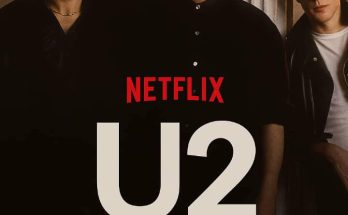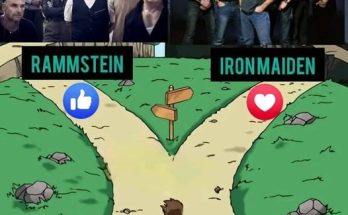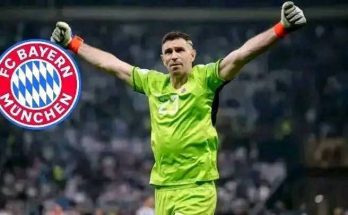On the early morning of **July 5, 2025**, in Harris’s hometown of Antioch, California, a Fourth of July celebration took a dangerous turn when a high-grade firework abruptly exploded in a back alley behind an apartment complex on Spanos Street, near Sycamore Drive—close to where Harris once lived during his youth . It was around **12:20 a.m. PST**, and as part of a neighborhood revelry, several fireworks were set off without consideration for safety protocols. In that moment, chaos ensued.
Multiple attendees were hit. Among them, a man operating the fireworks suffered catastrophic injuries, including the loss of several fingers and damage to his face and chest. Medical responders took four individuals to local hospitals, according to Antioch police and the Contra Costa County Fire Protection District, while another person drove themselves for treatment. Tragically, a 13‑year‑old boy was involved, though he declined medical attention.
Among the injured was **Najee Harris**, now 27, a celebrated former student of Antioch High School who went on to become a star running back for Alabama before being drafted by the Pittsburgh Steelers in 2021. Harris, who signed a one‑year deal with the Chargers earlier this year, was at the scene when the fireworks detonated unexpectedly. His agent, Doug Hendrickson, told reporters that Harris suffered what was described as a “superficial eye injury”.
That term—**superficial**—suggests damage primarily to the outer layers of the eye, such as the cornea or conjunctiva, without penetrating structures like the lens or retina . It’s reassuring that early reports confirm the injury did not involve vision-threatening damage, and Harris is slated to undergo a full medical evaluation as part of Chargers’ training camp physicals, beginning mid‑July.
Despite the frightening nature of the incident, official statements from both the agent and NFL insiders emphasized that Harris is expected to be **fully ready for the 2025 season. Chargers head coach Jim Harbaugh, like the rest of the organization, has chosen to focus on medical updates rather than fan speculation. Still, whether Harris might miss the start of training camp remains to be confirmed. Insiders suggest a short delay is possible, but nothing more serious is expected.
This accident has sparked widespread reaction. For many, the scene evoked flashbacks to the shocking fireworks accident in **2015** involving Giants star Jason Pierre‑Paul, who lost fingers in a hand‑held firework explosion. Social media users noted the irony: even after such a high‑profile incident, players still find themselves in similar hazards a decade later.
One fan on Twitter remarked, *“How is ‘no fireworks’ not in the standard contract?”* Others echoed the sentiment—“absolutely tragic and completely avoidable”. Safety measures around explosive devices have long been debated: whether athletes should be barred from privately handling fireworks, or whether insurance policies should explicitly forbid them from high‑risk behavior. The NFL issues annual Fourth‑of‑July reminders, but accidents continue to happen.
Let’s rewind to Harris’s background for added context. A standout at Antioch High School, Harris amassed an astonishing **7,948 rushing yards**, becoming the Bay Area’s all‑time leading high school rusher . He was the nation’s No. 1 prospect, drawing attention from top college football programs. He signed early with Alabama in January 2017, played a crucial role in two national championship teams, and left Tuscaloosa with 3,843 career rushing yards and Heisman Trophy consideration.
The Steelers selected him 24th overall in 2021, and from Day 1, he delivered, with four consecutive 1,000‑yard seasons—the only running back to do so from 2021 to 2024. He amassed over **4,312 career rushing yards** in 68 regular‑season games with 28 rushing touchdowns, plus 1,149 receiving yards with six receiving touchdowns . Despite Pittsburgh’s lack of playoff success during his tenure, Harris’s production was steady, earning him a Pro Bowl nod in his rookie year.
In March 2025, seeking a new challenge, Harris inked a **one‑year contract with the Los Angeles Chargers**, worth a base of \$5.25 million, with performance‑based incentives up to \$9.25 million. The Bolts crave a dominant ground game—the team hasn’t had a 1,000‑yard rusher since Melvin Gordon in 2017—and Harris, with his powerful downhill running style, fits perfectly into head coach Harbaugh’s vision. He’ll likely share carries with rookie Omarion Hampton and veterans like Hassan Haskins, Jaret Patterson, Kimani Vidal, and UDFA Raheim Sanders.
Enter the fireworks accident.
Details painted a harrowing scene: a residential area, back alley, midnight. No safety buffers; high-stakes explosive devices let loose. It’s a stark reminder that fireworks are not harmless party novelties—they carry real risks. Authorities, including Antioch’s police and the county fire district, have launched an investigation into the handling and legality of the fireworks used, whether permits were obtained, and whether safety protocols were enforced .
Harris’s presence there wasn’t suspicious—he was simply visiting family and friends, enjoying a hometown holiday. His agent emphasized his innocence, stating: “There is **no indication at this point** that Harris had anything to do with the explosion other than being in attendance” . This distinction was important amid rumors that he might have been operating the devices himself.
The fact that a professional athlete with a valuable contract was present and hurt underscores a broader legal and ethical concern: **should leagues heavily penalize players who voluntarily expose themselves to unnecessary risk during personal time?** Comparisons were made to clauses in contracts that prohibit activities like skydiving, scuba diving, or vehicle racing—why not fireworks? Fans on social media joked, “How is no fireworks not in the contract?” ([The Sun][4]), but legally, such clauses exist and could gain traction after this incident.
In terms of injury specifics, the superficial eye trauma is not expected to impact Harris’s vision or availability for the season. In the medical context, likely diagnoses could include corneal abrasions or conjunctival defects—both treatable within days or weeks with topical antibiotics, anti‑inflammatories, and eye patching. Missing the start of training camp remains possible, but recovery timelines suggest that any delay would be brief.
Recovery plan, per medical insiders: rest, ophthalmic drops, follow‑up exams. If symptoms (e.g., pain, redness, light sensitivity) worsen, scans or scans under slit lamp could confirm no deeper damage. But so far, neither Harris nor the Chargers medical staff has expressed any long‑term concerns.
Even with minimal physical damage, the psychological impact of such a sudden injury cannot be ignored. Fireworks explosions can be traumatic, especially if other attendees suffered far more severe injuries—such as losing fingers. As a result, Harris, like others in similar situations, might face lingering anxiety or hesitation around explosive devices. However, NFL mental health resources provide support to help him overcome any hesitation.
Another layer: the broader conversation on **player conduct and public image**. Athletes often live public, scrutinized lives—so when a high‑profile player is involved in a dangerous accident, even passively, it attracts media attention. Harris handled it with maturity, cooperating with medical guidance, and refraining from taking unnecessary blame. His statements, delivered through his agent, struck a calm, informed tone.
Harris’s journey—from AntiochLocal star to Alabama champion, to Pittsburgh’s consistently reliable back, and now to a critical role in L.A.’s high-stakes offense—speaks volumes about his character. He’s a composed, media-savvy figure, not prone to drama. His presence at the accident was unfortunate but not reckless. His response so far is responsible.
As training camp looms, the Chargers will no doubt monitor him closely. A brief medical rest, followed by gradual ramp-up during padded practices, could be the timeline. Coach Harbaugh is expected to issue a locker‑room update in the coming days, confirming Harris’s status and expected participation level. Chargers camp opens **mid‑July**, with the preseason Hall of Fame Game beckoning on **July 31** .
Looking ahead, Harris has much to prove in Los Angeles: a consistent 1,000‑yard campaign, workplace chemistry with quarterback Justin Herbert, and leadership in a ground‑and‑pound scheme. If he recovers fully, the excitement around the Chargers offense will be justified.
Beyond football, Harris’s brush with fireworks danger may catalyze renewed public safety campaigns. Jason Pierre‑Paul’s 2015 accident led to annual summer warnings from the NFL. This new incident might prompt a fresh round of reminders, safety protocols, or even amendments to collective bargaining agreements limiting fireworks use among players.
Finally, it underlines a universal caution: **fireworks are not toys**, they are explosive devices with devastating potential. Every summer, countless parties bring joy—and medical emergencies. Harris’s experience is a high‑profile example, reminding us that even professional athletes aren’t immune to accidents that can reshape seasons, careers, and lives.
In closing: Najee Harris remains expected to be healthy and fully available as Los Angeles Chargers football approaches. The superficial nature of his eye injury, along with his resilience and professional approach, points toward a full rebound. But the fireworks accident carries multiple implications: evolving athlete safety issues, personal responsibility versus entertainment, and the ongoing ripple effects of ignoring public safety around explosive devices.
As he returns to the field, many will watch not just his carries, but whether this incident leads to reflective shifts in league policy, offseason player behavior, or community awareness—especially here in Antioch, where fireworks are woven into tradition, but now shadowed by harsh consequences.


